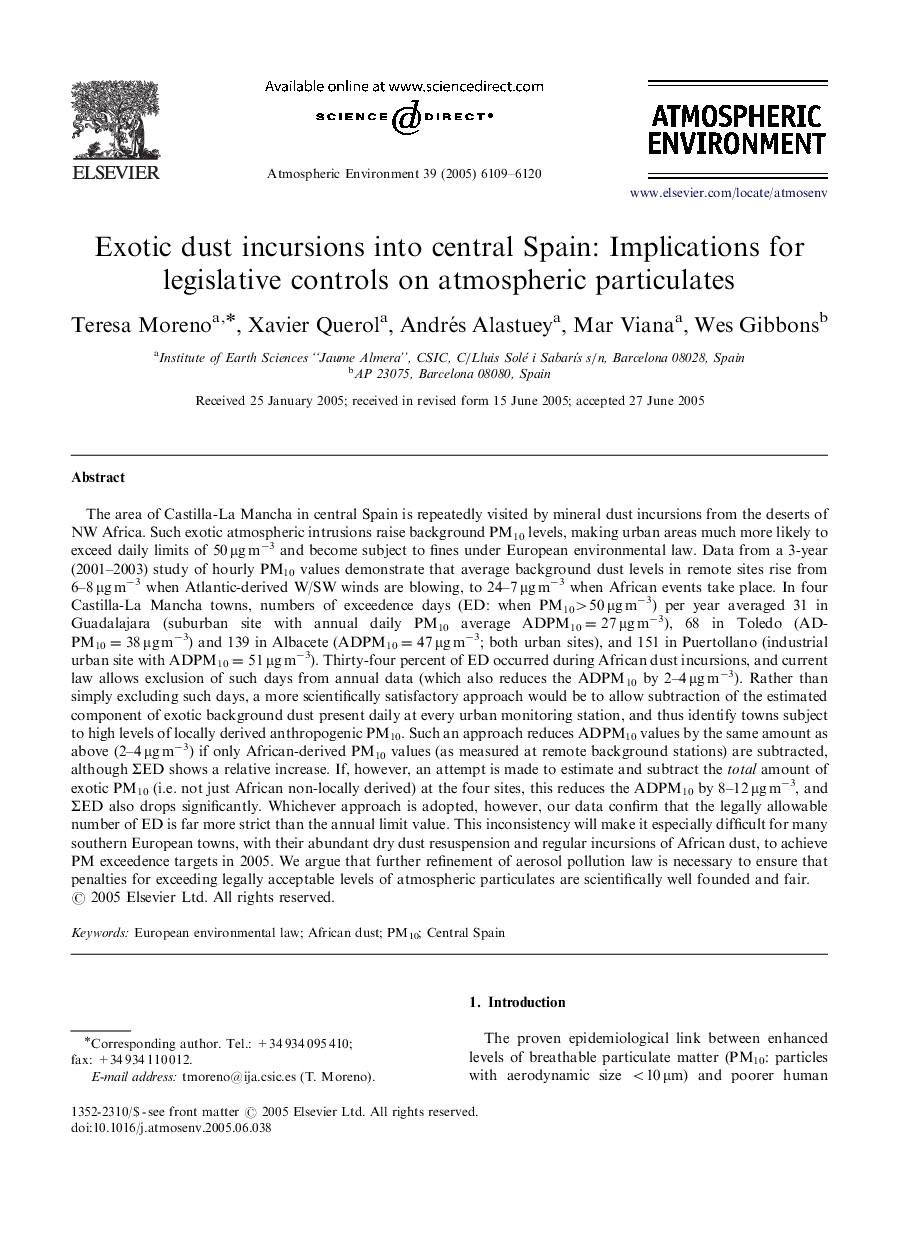| کد مقاله | کد نشریه | سال انتشار | مقاله انگلیسی | نسخه تمام متن |
|---|---|---|---|---|
| 4444625 | 1311248 | 2005 | 12 صفحه PDF | دانلود رایگان |

The area of Castilla-La Mancha in central Spain is repeatedly visited by mineral dust incursions from the deserts of NW Africa. Such exotic atmospheric intrusions raise background PM10 levels, making urban areas much more likely to exceed daily limits of 50 μg m−3 and become subject to fines under European environmental law. Data from a 3-year (2001–2003) study of hourly PM10 values demonstrate that average background dust levels in remote sites rise from 6–8 μg m−3 when Atlantic-derived W/SW winds are blowing, to 24–7 μg m−3 when African events take place. In four Castilla-La Mancha towns, numbers of exceedence days (ED: when PM10>50 μg m−3) per year averaged 31 in Guadalajara (suburban site with annual daily PM10 average ADPM10=27 μg m−3), 68 in Toledo (ADPM10=38 μg m−3) and 139 in Albacete (ADPM10=47 μg m−3; both urban sites), and 151 in Puertollano (industrial urban site with ADPM10=51 μg m−3). Thirty-four percent of ED occurred during African dust incursions, and current law allows exclusion of such days from annual data (which also reduces the ADPM10 by 2–4 μg m−3). Rather than simply excluding such days, a more scientifically satisfactory approach would be to allow subtraction of the estimated component of exotic background dust present daily at every urban monitoring station, and thus identify towns subject to high levels of locally derived anthropogenic PM10. Such an approach reduces ADPM10 values by the same amount as above (2–4 μg m−3) if only African-derived PM10 values (as measured at remote background stations) are subtracted, although ΣED shows a relative increase. If, however, an attempt is made to estimate and subtract the total amount of exotic PM10 (i.e. not just African non-locally derived) at the four sites, this reduces the ADPM10 by 8–12 μg m−3, and ΣED also drops significantly. Whichever approach is adopted, however, our data confirm that the legally allowable number of ED is far more strict than the annual limit value. This inconsistency will make it especially difficult for many southern European towns, with their abundant dry dust resuspension and regular incursions of African dust, to achieve PM exceedence targets in 2005. We argue that further refinement of aerosol pollution law is necessary to ensure that penalties for exceeding legally acceptable levels of atmospheric particulates are scientifically well founded and fair.
Journal: Atmospheric Environment - Volume 39, Issue 33, October 2005, Pages 6109–6120